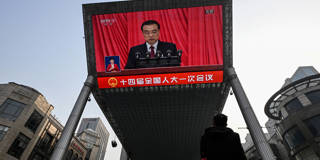China’s slowing economic growth is a reflection of a new policy approach by the central government. Instead of chasing rapid growth rates at a time when the world economy is sputtering, China’s government is emphasizing job creation and macroeconomic stability.
SHANGHAI – After Chinese GDP grew by only 3% in 2022, one would have expected the government to set a growth target of at least 6% for this year. In fact, virtually no market forecast projects a lower rate. Yet, at last month’s National People’s Congress, outgoing Premier Li Keqiang revealed in his final Government Work Report that the government was aiming for growth of about 5%, the lowest target of his tenure.
Under former Premier Wen Jiabao, from 2003 to 2013, China maintained an official growth target of 8%. But, in his final Government Work Report, Wen lowered the target for the first time, by 0.5 percentage points. The reason was obvious: Wen wanted to help cool the then-overheated economy. Surprisingly, Wen’s successor, Li, effectively treated 7.5% as a ceiling for growth during his ten-year term.
In fact, since 2014, Premier Li has consistently revised China’s growth target a half-point downward from the previous year’s target, whether through a categorical adjustment or the introduction of a lower range. With GDP growth repeatedly falling short of the official target, one cannot help but assume that this was a response to the economy’s actual performance. If existing targets are not being met, why would the government raise them?

SHANGHAI – After Chinese GDP grew by only 3% in 2022, one would have expected the government to set a growth target of at least 6% for this year. In fact, virtually no market forecast projects a lower rate. Yet, at last month’s National People’s Congress, outgoing Premier Li Keqiang revealed in his final Government Work Report that the government was aiming for growth of about 5%, the lowest target of his tenure.
Under former Premier Wen Jiabao, from 2003 to 2013, China maintained an official growth target of 8%. But, in his final Government Work Report, Wen lowered the target for the first time, by 0.5 percentage points. The reason was obvious: Wen wanted to help cool the then-overheated economy. Surprisingly, Wen’s successor, Li, effectively treated 7.5% as a ceiling for growth during his ten-year term.
In fact, since 2014, Premier Li has consistently revised China’s growth target a half-point downward from the previous year’s target, whether through a categorical adjustment or the introduction of a lower range. With GDP growth repeatedly falling short of the official target, one cannot help but assume that this was a response to the economy’s actual performance. If existing targets are not being met, why would the government raise them?